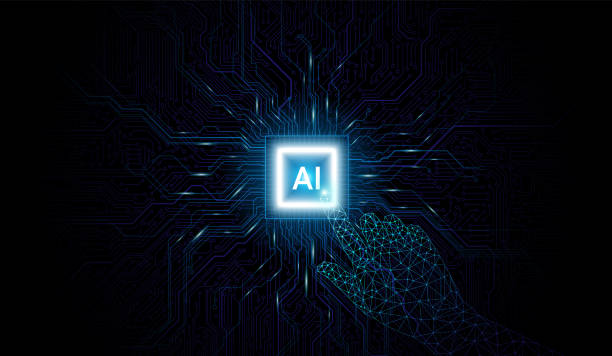What is an Artificial Intelligence Robot and How Does it Work?
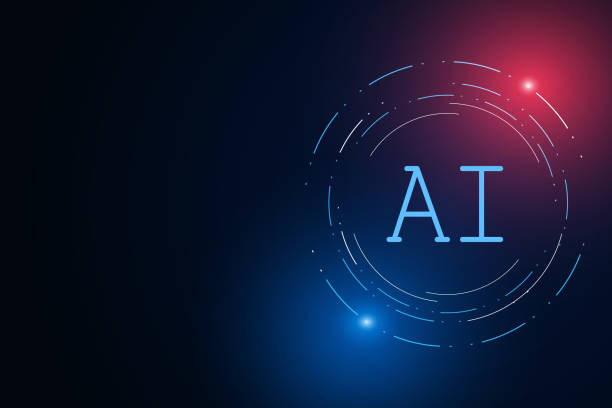
#Artificial Intelligence Robot is a combination of two important areas of technology, namely Artificial Intelligence (AI) and Robotics.
In short, these robots are machines that, using algorithms and AI models, are capable of performing tasks that usually require human intelligence.
These tasks can include learning, reasoning, problem-solving, perception, and even decision-making.
Artificial intelligence robots use artificial intelligence by receiving data from their surrounding environment and processing it using complex algorithms to perform their tasks.
This data can include images, sounds, texts, or other types of information.
For example, an AI robot can be used to identify objects in an image, translate a text from one language to another, or even drive a car.
These robots are used in various industries such as manufacturing, healthcare, customer service, and education.
Robotics is an important part of this technology and allows the robot to physically interact with the environment.
Therefore, an AI robot is not only an intelligent machine, but also a powerful tool that can help improve efficiency and productivity in many fields.
Did you know that 94% of users’ first impressions of a business are related to its website design? With professional corporate website design by **Rasaweb**, turn this initial impression into an opportunity for growth.
✅ Attract more customers and increase sales
✅ Create credibility and trust in the eyes of the audience⚡ Get a free website design consultation!
Diverse Applications of Artificial Intelligence Robots in Various Industries
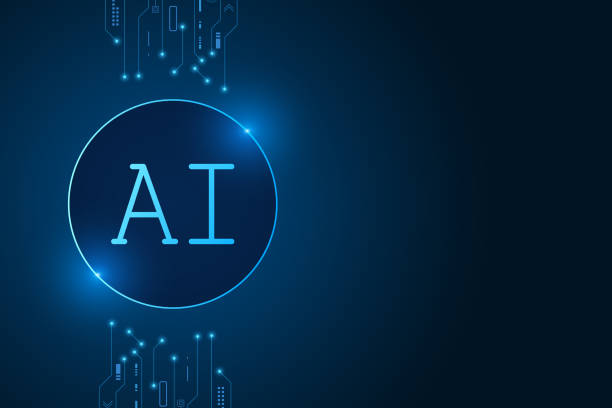
AI robots are used in various industries due to their many capabilities.
In the manufacturing industry, these robots are used to automate repetitive and dangerous processes.
They can perform tasks such as assembling parts, inspecting quality, and moving materials with greater accuracy and speed than humans.
In the field of healthcare, an AI robot can assist surgeons in performing complex operations, distribute medications, and even help patients with rehabilitation.
In the customer service industry, chatbot robots use artificial intelligence to answer customer questions and solve their problems.
These robots can be available 24 hours a day, 7 days a week and help reduce customer service costs.
In the education industry, AI robots can act as a private tutor for students and help them learn difficult concepts.
In general, the applications of AI robots are very broad and diverse, and are expected to increase in the future.
Advantages and Disadvantages of Using Artificial Intelligence Robots

Using AI robots has many advantages.
These robots can increase efficiency and productivity, reduce costs, and improve the quality of products and services.
They can also perform dangerous and repetitive tasks and prevent harm to humans.
For example, using an AI robot in mines can help reduce the risk of death for workers.
However, the use of these robots also has disadvantages.
One of the most important disadvantages is the high cost of implementing and maintaining them.
In addition, the use of AI robots can lead to job losses for some people.
Ethical concerns regarding privacy and data security are also other disadvantages of using this technology.
For example, the collection and use of personal data by AI robots can create concerns about privacy.
Therefore, it is necessary to carefully evaluate the advantages and disadvantages of AI robots before implementation and take the necessary measures to reduce disadvantages and increase advantages.
The correct and responsible use of AI robots can help improve the quality of human life, but the misuse of it can lead to serious problems.
| Advantages | Disadvantages |
|---|---|
| Increased efficiency and productivity | High implementation cost |
| Cost reduction | Job losses |
| Improved product quality | Ethical concerns |
| Performing dangerous tasks | Privacy and data security |
What Will the Future of Artificial Intelligence Robots Be?
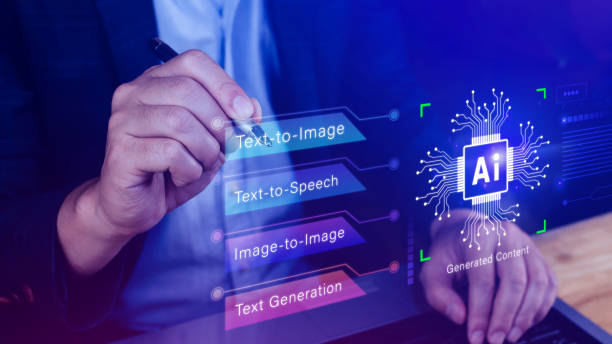
The future of AI robots looks very bright and promising.
With the ever-increasing advances in the fields of artificial intelligence, machine learning, and robotics, it is expected that these robots will be able to perform more complex tasks in the future.
They can play an important role in areas such as personal healthcare, automated transportation, and smart energy management.
For example, an AI robot can help the elderly and disabled with their daily tasks, or self-driving cars can reduce traffic and increase road safety.
Also, AI robots are expected to be able to interact more naturally and effectively with humans in the future.
They can understand natural language, recognize emotions, and respond to human needs.
However, the development and use of AI robots must be done with care and responsibility.
It must be ensured that this technology is used for the benefit of all members of society and that their rights and privacy are protected.
The development of AI robots requires attention to the ethical and social dimensions of this technology in order to fully benefit from its advantages.
Are you dissatisfied with the low sales of your online store?
Rasaweb is your solution for having a professional and high-selling online store.
✅ Significantly increase sales and income
✅ Easy and enjoyable shopping experience for customers
⚡ Get a free consultation from Rasaweb right now!
Challenges Facing the Development of Artificial Intelligence Robots

The development of AI robots faces many challenges.
One of the most important challenges is the lack of sufficient and high-quality training data.
In order for an AI robot to learn effectively and perform its tasks correctly, it needs a large amount of training data.
This data must be diverse, accurate, and error-free.
Another challenge is the complexity of AI algorithms.
Developing algorithms that can effectively process data and make the right decisions requires high expertise and technical knowledge.
In addition, issues related to security and privacy are also important challenges in the development of AI robots.
It must be ensured that robots are safe against cyber attacks and properly protect users’ personal data.
Also, ethical issues related to robot decision-making should be considered.
For example, if a self-driving car is faced with a dangerous situation, how should it decide? Should it save the lives of its passengers or the lives of pedestrians? Answering these questions requires careful discussion and examination.
The responsible development and use of AI robots requires cooperation between researchers, industrialists, and policymakers.
The Difference Between Traditional Robots and Artificial Intelligence Robots
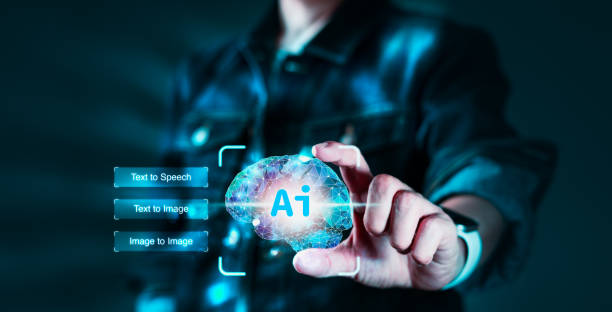
The main difference between traditional robots and AI robots is the level of intelligence and independence they have.
Traditional robots are usually pre-programmed and can only perform tasks that are defined for them.
They are not able to learn, adapt to new conditions, or make independent decisions.
For example, an industrial robot that is used to weld parts in a production line is a traditional robot.
This robot can only weld parts in specific positions and needs to be reprogrammed if conditions change.
In contrast, AI robots are able to learn, adapt to new conditions, and make independent decisions.
They can learn through experience and improve their performance.
These robots can operate in dynamic and unpredictable environments and automatically react to changes.
For example, an AI robot that is used for search and rescue in earthquake-stricken areas can automatically determine its route, identify obstacles, and search for survivors.
Therefore, an AI robot is more flexible and powerful than traditional robots and can be used in more diverse fields.
How to Train an Artificial Intelligence Robot?

Training an AI robot is a complex and multi-step process.
The first step is to collect sufficient and high-quality training data.
This data should be appropriate for the tasks that the robot is supposed to perform.
For example, if you want to train an AI robot to identify images, you need a large amount of images that are labeled (i.e. each image is identified by the name of the object in it).
The second step is to choose a suitable machine learning algorithm.
There are various algorithms for machine learning, each of which is suitable for a specific type of data and tasks.
The third step is to train the algorithm using the training data.
At this stage, the algorithm gradually learns how to process the data and reach the desired results.
The fourth step is to evaluate the robot’s performance.
After the algorithm is trained, you need to evaluate its performance using test data.
This data should not have been used in the training process.
If the robot’s performance is not acceptable, you need to repeat the training process and adjust the algorithm.
The fifth step is to deploy the robot in a real environment.
After the robot’s performance reaches the desired level, you can deploy it in a real environment and use it to perform the desired tasks.
Training an AI robot is an iterative process and requires patience.
| Steps to Train an AI Robot | Description |
|---|---|
| Collecting training data | Collecting sufficient and high-quality data appropriate to the robot’s tasks |
| Choosing a machine learning algorithm | Choosing the right algorithm for the type of data and tasks |
| Algorithm training | Training the algorithm using the training data |
| Performance evaluation | Evaluating the robot’s performance using test data |
| Robot deployment | Deploying the robot in a real environment |
The Role of Data in the Performance of Artificial Intelligence Robots
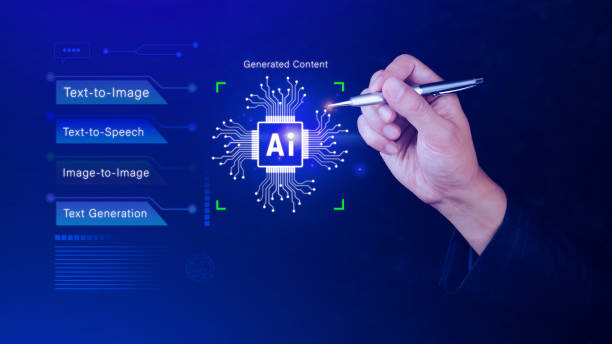
Data plays a very important role in the performance of AI robots.
In fact, data is the main fuel of these robots.
Without sufficient and high-quality data, AI robots cannot learn effectively and perform their tasks correctly.
Data helps robots to identify patterns and relationships in the real world and make decisions based on them.
The more data there is and the more diverse it is, the better the robots can learn and the better they can perform.
For example, an AI robot that has been trained to recognize faces needs a large amount of images of different faces.
The more images there are and the more diverse they are (for example, including the faces of different people with different races, ages, and facial expressions), the better the robot can recognize faces.
Therefore, collecting, processing, and managing data is one of the most important aspects of developing AI robots.
The quality of data directly affects the quality of performance of the AI robot.
Are you tired of losing business opportunities due to not having a professional corporate website?
Rasaweb helps you build a professional corporate website to:
✅ Create a powerful and reliable image of your brand
✅ Turn website visitors into loyal customers
⚡ Get a free consultation right now!
Ethical Issues Related to Artificial Intelligence Robots

The development and use of AI robots raises many ethical issues.
One of the most important issues is accountability.
If an AI robot makes a mistake and causes harm, who is responsible? Is it the robot’s maker, the robot’s user, or the robot itself? These questions do not have a simple answer and require careful discussion and examination.
Another issue is discrimination.
If AI algorithms are trained based on discriminatory data, they may make discriminatory decisions.
For example, if an AI robot that is used to hire employees is trained based on data that shows that men perform better than women, it may ignore women.
Ethics in artificial intelligence should be considered to prevent such problems.
Issues related to privacy and data security are also among the important ethical issues in this field.
It must be ensured that AI robots properly protect users’ personal data and do not use them for unauthorized purposes.
Also, issues related to the control and autonomy of robots should be considered.
Should we allow robots to act completely independently, or should they always be supervised by humans? Answering these questions requires a deep understanding of AI technology and its consequences.
The ethical use of AI robots can benefit society, but the unethical use of it can lead to serious problems.
How Can We Use Artificial Intelligence Robots for the Benefit of Society?
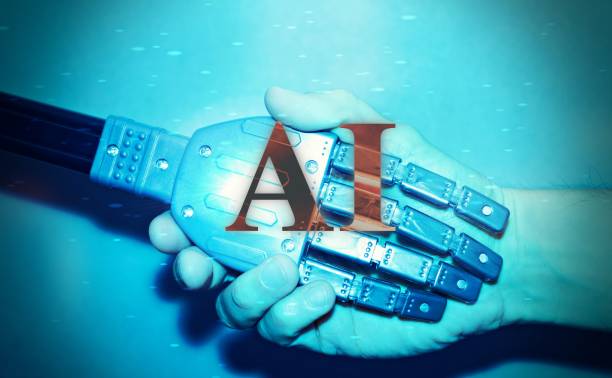
To be able to use AI robots for the benefit of society, we must pay attention to several points.
First, we must ensure that the development and use of this technology is done with respect for ethical principles and human rights.
We must enact laws and regulations that prevent the misuse of this technology and protect the rights and privacy of individuals.
Second, we must increase education and awareness about artificial intelligence and robotics.
People need to understand what this technology is and what its capabilities and limitations are.
Third, we must increase investment in research and development in the field of artificial intelligence and robotics.
By investing in this field, we can develop new technologies that help solve society’s problems.
For example, we can use AI robots to improve healthcare, reduce traffic, better manage natural resources, and create new job opportunities.
AI robots can play an important role in improving the quality of human life.
However, to achieve this goal, we must use this technology responsibly and considering all aspects.
The proper use of this technology requires cooperation between government, industry, and society.
Frequently Asked Questions
| Question | Answer |
|---|---|
| What is an Artificial Intelligence Robot? | An Artificial Intelligence Robot (AI Robot) is a machine capable of understanding its environment, reasoning, learning, and making decisions to perform tasks independently. |
| What is the difference between regular robots and AI robots? | Regular robots perform repetitive tasks based on prior programming, while AI robots can learn from experience, interact dynamically with the environment, and even behave in a way that resembles human intelligence. |
| What are the main applications of AI robots? | They are used in industries (manufacturing, assembly), medicine (surgery, diagnosis), services (customer support, home), exploration (space, underwater), and many other fields. |
| What technologies are used in the construction of AI robots? | Machine Learning, Computer Vision, Natural Language Processing, Deep Learning, and Robotics are among the key technologies. |
| Can AI robots have feelings? | Currently, robots do not have feelings in the human sense. They can identify and react to emotions, but they do not experience the emotions themselves. |
| What are the main challenges in developing AI robots? | Safety, reliability, ethics, autonomy, adaptability to complex environments, and natural interaction with humans are important challenges. |
| How are AI robots trained? | They are usually trained using large amounts of data, machine learning algorithms, and deep learning to identify patterns and make decisions. |
| Examples of AI robots in everyday life? | Smart robotic vacuum cleaners, customer support chat robots, self-driving cars, and surgical robots in hospitals. |
| Are AI robots a threat to human jobs? | Some repetitive jobs may be automated, but at the same time, robots can increase productivity and create new jobs in the development, maintenance, and monitoring of these systems. |
| How is the future of AI robots predicted? | They are expected to become smarter, more autonomous, and capable of performing more complex tasks and interacting more closely with humans in various environments. |
And other services of Rasa Web advertising agency in the field of advertising
Smart UI/UX: A fast and efficient solution for user interaction with a focus on attractive user interface design.
Intelligent Data Analysis: A novel service for increasing customer acquisition through marketing automation.
Smart Sales Automation: A creative platform to improve sales by optimizing key pages.
Intelligent Conversion Rate Optimization: Designed for businesses looking to grow online through proprietary programming.
Smart Direct Marketing: A fast and efficient solution for user interaction with a focus on SEO-driven content strategy.
And more than a hundred other services in the field of internet advertising, advertising consulting and organizational solutions
Internet Advertising | Advertising Strategy | Advertorials
Resources
What is artificial intelligence and how does it work?
,The importance of artificial intelligence in today’s life
,What are the advantages and disadvantages of artificial intelligence?
,From Revolution to Form/Artificial Intelligence in the World’s Newspapers
?At Rasa Web Digital Marketing Agency, we help your business shine powerfully in the online world. From secure website design and professional to comprehensive SEO strategies and targeted content production, we are your trusted partner on your digital growth path.
📍 Tehran, Mirdamad Street, next to the Central Bank, South Kazerun Alley, Ramin Alley No. 6


